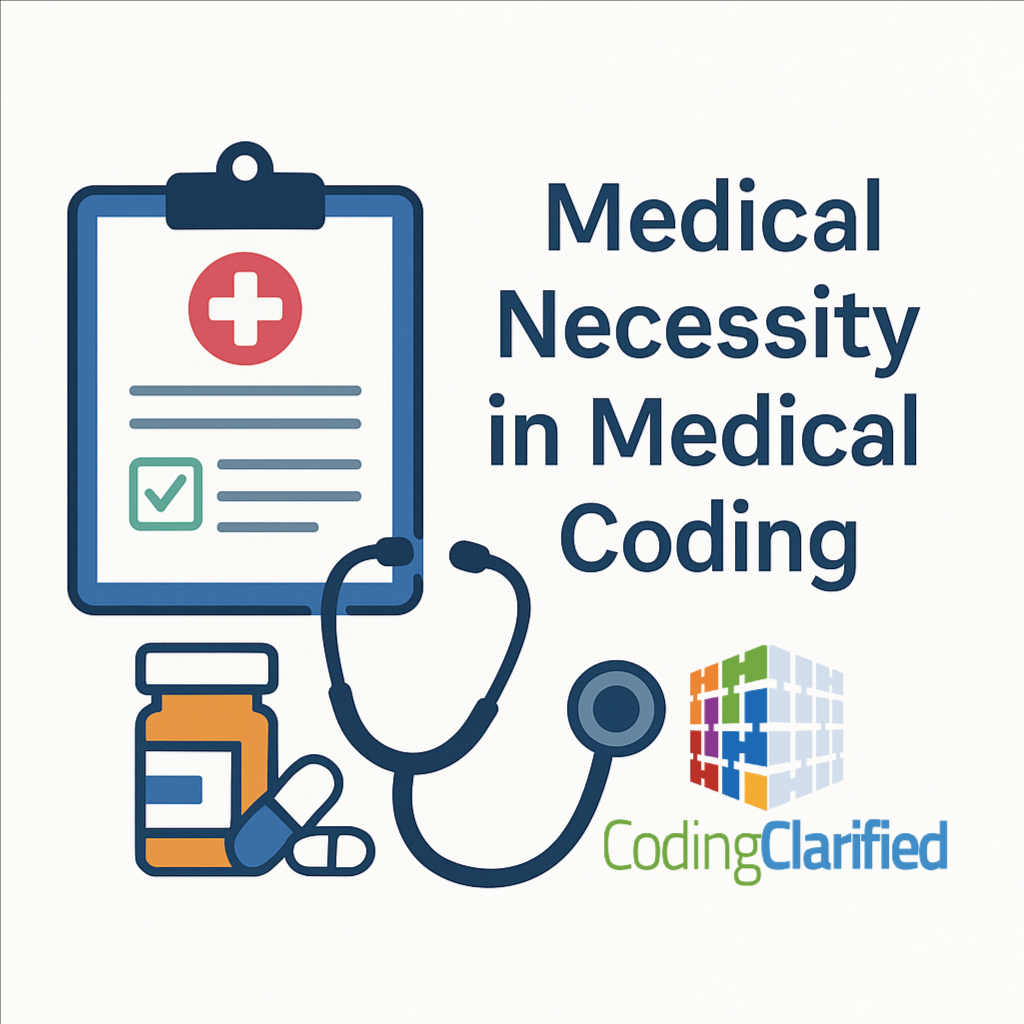What Is Medical Necessity in Medical Coding & Billing?
Medical necessity is a cornerstone of accurate medical coding and billing. It determines whether a service, procedure, or supply is reasonable, necessary, and appropriate based on a patient’s medical condition. In simple terms, if the treatment is not medically necessary, insurance payers may deny the claim — regardless of how accurately it is coded.
Definition of Medical Necessity
Medical necessity is the justification for a service or procedure as being essential for diagnosing, treating, or preventing illness, injury, or disease. Most payers, including Medicare and commercial insurers, define medical necessity using criteria such as:
- Alignment with accepted standards of medical practice
- Provision for the diagnosis or direct care of an illness, injury, or disease
- Not primarily for the convenience of the patient or provider
- Provided at the most appropriate level of care
Why Medical Necessity Matters
- Insurance Coverage: Payers only reimburse services deemed medically necessary.
- Claim Approval: Even perfectly coded claims can be denied if medical necessity isn’t demonstrated.
- Compliance: Incorrectly billing for non-covered services can lead to audits, recoupments, or even fraud investigations.
How Medical Necessity is Determined
- Documentation Review: The patient’s medical record must clearly support the diagnosis and the service performed.
- Diagnosis-to-Procedure Link: ICD-10-CM codes must justify the CPT® or HCPCS Level II codes billed.
- Coverage Policies: Medicare Local Coverage Determinations (LCDs) and National Coverage Determinations (NCDs), as well as commercial payer guidelines, define what diagnoses justify specific services.
Medical Necessity in Coding & Billing
- ICD-10-CM: Codes should reflect the patient’s true clinical condition.
- CPT®/HCPCS Codes: The service or supply should be consistent with the documented diagnosis.
- Modifiers: Sometimes used to explain special circumstances affecting necessity.
- Supporting Documentation: Includes physician notes, test results, and treatment plans.
Common Causes of Medical Necessity Denials
- Non-covered diagnosis for the service billed
- Inadequate documentation to support the service
- Upcoding (coding for a higher-level service than provided)
- Lack of linkage between diagnosis and procedure
Guidelines for Demonstrating Medical Necessity
- Accurate Documentation: Providers must document symptoms, history, exam findings, diagnostic test results, and treatment rationale.
- Link ICD-10-CM to CPT® Codes: Use coding software or encoders to ensure the diagnosis supports the procedure.
- Follow Payer Policies: Always check LCDs, NCDs, and commercial payer coverage rules.
- Be Specific: Avoid unspecified or vague diagnosis codes when a more specific one is available.
- Timely Updates: Keep up with annual ICD-10 and CPT® updates that may affect coverage.
Tips for Coders
- Always review clinical documentation thoroughly before assigning codes.
- Use encoder tools to verify diagnosis-to-procedure coverage.
- Educate providers on documentation requirements for medical necessity.
- Keep a list of frequently used services and their required diagnosis codes for quick reference.
- Appeal denials with detailed medical record excerpts and policy references when necessary.
Bottom Line:
Medical necessity is more than just a billing requirement — it’s a compliance safeguard and an essential part of ethical coding. When diagnosis codes accurately support the services performed, it ensures appropriate reimbursement, reduces denials, and supports patient care.
AAPC https://www.aapc.com/blog/46500-medical-necessity-why-it-matters-ways-to-demonstrate-it/
Medical Coding MDM https://codingclarified.com/medical-coding-mdm/
Evaluation and Management (E/M) Coding https://codingclarified.com/e-m-2025/

